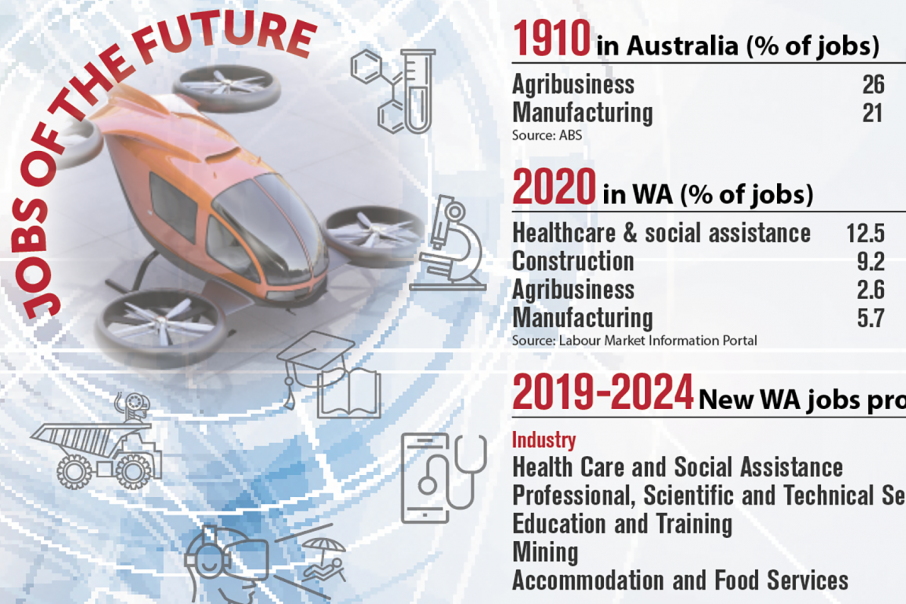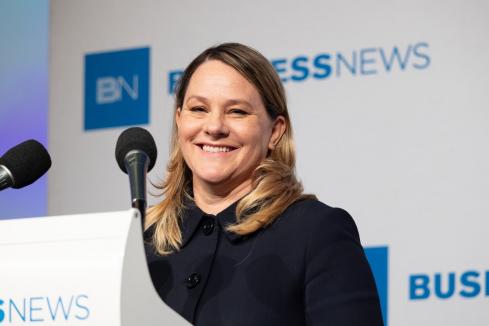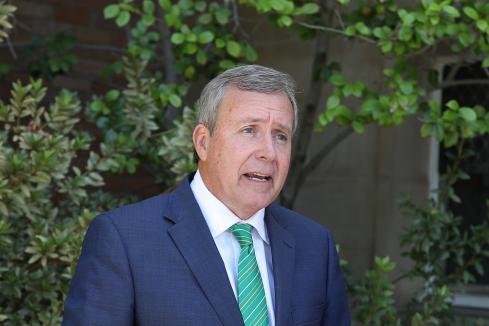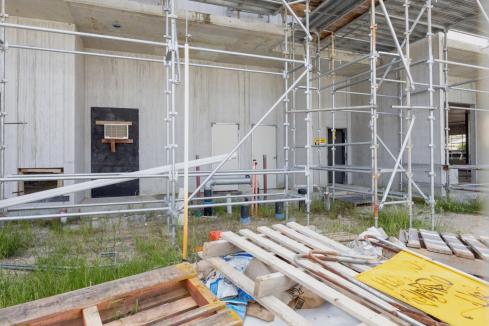An ageing population, environmentalism and automation will be big trends affecting employment in the next decade, with caring and creative jobs advantaged for growth. Click through for our list of WA's biggest employers.


More than a quarter of the Australian workforce was employed in agribusiness in 1910, with a further 21 per cent working in manufacturing.
See below for our list of WA's Biggest Employers
Fast forward a century, to August 2020, and just 2.6 per cent of Western Australian jobs were in agricultural industries, federal Labour Market Information Portal data shows, and 5.7 per cent in manufacturing.
Such have been the developments in agricultural practices, however, that a labour force that small is more than enough to feed WA.
About 80 per cent of agribusiness output is exported, according to state government data.
The numbers illustrate a long-term transition in the WA economy, and a trend reflected across the developed world.
(click here to view a PDF version of this special report)
New technologies have lifted labour productivity, increased the amount of food or goods produced by a single worker, and enabled a growing share of the workforce to learn new skills and undertake higher-value tasks.
If the story of the 20th century was that rising labour productivity enabled larger segments of the workforce to shift into higher-value jobs, it’s far from clear whether that trend will be replicated in the automation revolution this century.
Growing computing power and data accessibility are supporting the development of machine learning programs, where computers are trained to do tasks otherwise undertaken by humans, such as analysing images or driving cars.
It’s widely agreed that repetitive, technical tasks are most at risk of automation, such as driving a truck from inside a mine pit to a processing plant next door.

By contrast, interpersonal and creative skills will be most in demand in Australia in the decade ahead, Deloitte forecast last year.
The consultancy’s ‘Path to Prosperity’ report said the economy had largely transitioned from manual skills towards cognitive skills, with the next step a move to what Deloitte called ‘skills of the heart’.
Skills such as customer service, conflict resolution and leadership were already in short supply across Australia, Deloitte said, and would be increasingly needed.
These skills favour women, Deloitte said.
“Women currently dominate the fastest growing jobs, the non-routine [creative] jobs of the head,” the report said.
“Men dominate the jobs most susceptible to automation, manual occupations involving repetitive tasks.
“The existing female workforce is in the right place at the right time to benefit from these changes.”
A practical example of the demand for caring occupations is in the health sector, where demand is likely to remain strong regardless of progress in automation.
Ageing Australia
About a million Australians will be 85 years or older by 2034-35, double the level of 2015, according to the federal government’s 2015 intergenerational report.
“By 2054-55 there are projected to be seven million Australians aged 65 to 84, compared with around 3.1 million in 2015,” the report said.
“This would represent just under 18 per cent of the total population, compared with 13 per cent in 2014-15.
“In 1974-75, around 1.2 million persons were aged over 65, or around nine per cent of the population.”
That would require a quadrupling of the aged care workforce by 2050, the Productivity Commission has forecast.
Business News’ Data & Insights numbers show nearly 16,900 employees at the top 10 aged care providers in WA.
Federal data showed 522 vacancies for aged and disabled carers in WA in the three months to September 2020, up from 349 in the same period of 2010.
The ongoing Royal Commission into Aged Care Quality and Safety has sparked debate that could influence workforce size.
Unions have called for the staff-to-customer ratio at aged care facilities to be regulated, to ease pressure on the sector’s workforce.
That could potentially drive demand for aged care workers.
There has been some pushback on the unions’ suggestion, however, with consultancy Ansell Strategic lodging a submission to the royal commission arguing fixed ratios would limit flexibility to adjust to patient need.
“When resident acuity is low, staff are underutilised; this becomes both a taxpayer and consumer cost, because fixed rosters must be funded,” the submission said.
“The practice can also create a culture of low productivity.
“[The] floor often becomes the ceiling, and static rosters create a risk to residents and staff when resources are stretched.”
Regardless of the regulatory approach, healthcare and social assistance is expected to generate more new jobs than any other industry in WA in the next five years, according to federal data.
About 16,000 new roles will be needed, an increase of 10.3 per cent.

Energy and exports
The resources sector is already the biggest contributor to WA’s economy, with iron ore sales earning $98 billion in 2019 and LNG around $27 billion.
Combined, that’s 43 per cent of the state’s annual income.
Iron ore is likely to continue to be the biggest earner for decades, with BHP last year securing environmental approval to build a dozen mines over a 50-year period.
State government data shows WA was the second lowest cost producer of seaborne iron ore exports in 2019, after India, showing the industry has a competitive advantage.
Between them, WA’s three biggest iron ore miners employ more than 33,000 people.
LNG’s workforce could grow in coming years with projects in the pipeline.
Development of the Scarborough gas field, a new processing train at Pluto and, longer term, the Browse project, are all on the agenda for Woodside Petroleum.
Data & Insights says about 1,800 construction jobs would be created by Scarborough and Pluto, with a further 720 operational jobs.
Browse would mean 3,200 construction jobs and support 600 operational roles, according to Data & Insights.
If the projects do not proceed, there’s a possibility production may reduce.
A growing excess capacity is forecast at North West Shelf Venture’s Karratha Gas Plant, with operator Woodside recently telling investors the facility would not have enough gas entering the plant to reach capacity.
About a quarter of capacity will be available in 2024.
Woodside has options, with some deals in negotiations.
But Karratha Train 3 would shut if the company fails to land on a deal.
More broadly, there’s ongoing debate about the continued use of LNG as the world seeks to cut carbon emissions.
It’s likely LNG will continue to have a role in WA’s economy, while the industry could grow into opportunities in hydrogen production and carbon capture and storage.
Woodside announced in November it would target carbon neutrality by 2050, although the Conservation Council of WA said it did not take the ambitions seriously.
Globally, natural gas use should likely decline between 13 per cent and 52 per cent by 2050, according to an International Panel on Climate Change’s forecasts of mitigation pathways.
“But some pathways show a marked increase, albeit with widespread deployment of carbon capture and storage,” the report said.
Skills from the LNG industry will have applications for hydrogen production and carbon capture and storage, as the world cuts emissions.
Bank of America predicts $11 trillion could be invested in hydrogen infrastructure by 2050, with $2.5 trillion of annual production.
“For the increasing number of countries signing legally binding pledges for net zero carbon emissions by 2050, the only viable clean molecule is hydrogen, which will play a major role in achieving these goals,” the bank said in a September briefing note.
“Costs need to fall up to 85 per cent for green hydrogen to compete with fossil fuel-derived hydrogen, which should happen by 2030.
“Furthermore, governments, such as the European Union, China, and Australia, are starting to provide strong policy support, through increased carbon prices and funding to develop the fuel.”
Bloomberg’s ‘New Energy Outlook’ in October forecast at least $14 trillion would be spent on hydrogen manufacturing, transport and storage by 2050 to keep global warming below 2 degrees.
The state government has an ambition that WA’s market share in global hydrogen exports will be similar to its share of LNG exports by 2030: about 12 per cent of the market.
For context, the four LNG operators in WA employ about 8,500 people, according to Data & Insights.
But the green hydrogen industry is not yet competitive.
That means replacing LNG with hydrogen in the near term would necessitate replacing an income earning export with one requiring support from other parts of the economy.
Then there’s carbon capture and storage.
Chevron has already made an early move in this space at the Gorgon LNG facility, with a CCS plant that hit teething issues.
Woodside has flagged the potential to set up a carbon abatements business, highlighting huge storage potential in WA.
Once drained of gas, subsea reservoirs such as Pluto, Browse and in the North West Shelf fields could sequester about 3.3 gigatonnes of carbon dioxide, about seven years’ worth of Australian emissions.
WA could be the world’s carbon storage hub.
Beyond hydrogen and carbon capture, WA is already positioning for projected growth in battery manufacturing.
McKinsey predicts battery demand to grow roughly 17-fold from 2019 to 2030, largely driven by electric mobility uses.
That would likely drive demand for commodities such as lithium, and downstream manufacturing opportunities.
Production of lithium, tantalum and tin employed about 2,550 full time equivalent workers in WA in the 2020 financial year, according to state government data, down from 4,850 in the year to June 2019.
A new lithium refinery is under construction and another is likely, although one near-complete refinery has been delayed indefinitely.
But it’s not clear how far WA can move beyond that.
An analysis by the Chamber of Commerce and Industry of WA released in late 2018 said the state could struggle to move beyond chemical production to making cathode materials.
Cathode making was highly competitive, would require imports, and would face high capital and operating costs, including energy, CCI said.
All of that indicates that the battery sector won’t surpass iron ore in employment numbers any time soon.
















